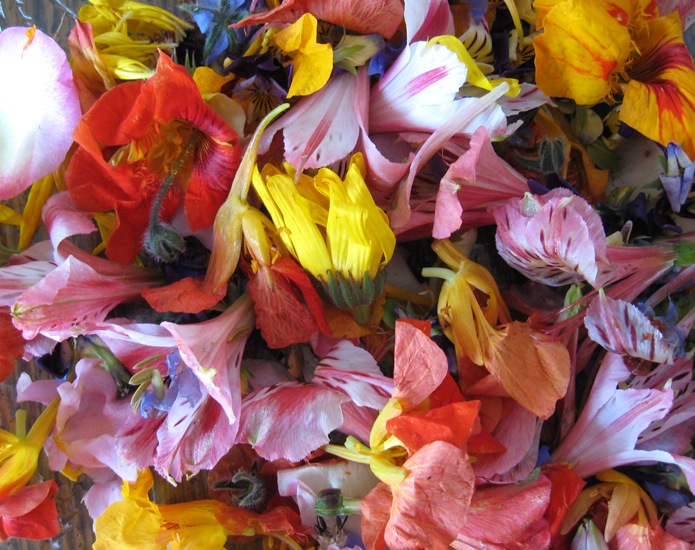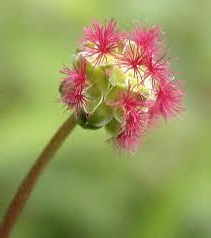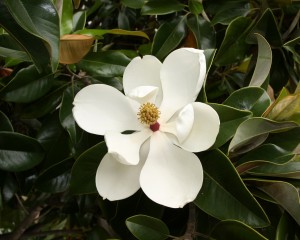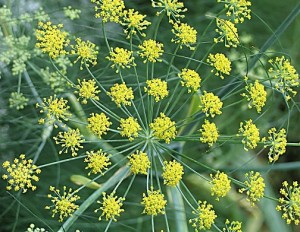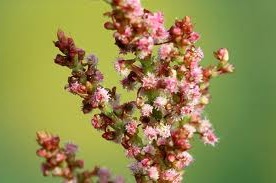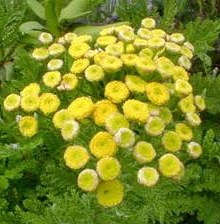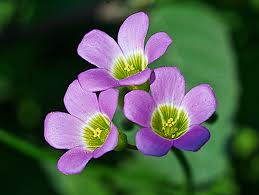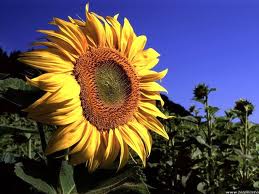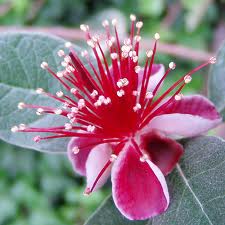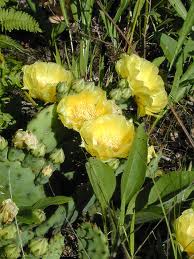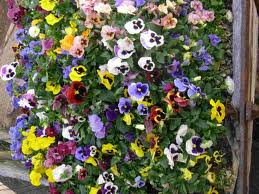Burnet, Magnolia, Fennel, Garden Sorrel, Tansy, Pink Wood Sorrel, Sunflower, Pineapple Guava, Prickly Pear, Pansies
Burnet (Sanguisorba minor) is very easy to grow whether in a flower pot or a garden. A native of Europe it came to early settlements North America and has escaped naturalize. So is it a wild edible or a cultivated edible? You can buy the seeds or good look for it. I take it from my garden, dice it, and sprinkle it on salads especially when I don’t have an cucumbers because Burnet tastes like cukes. Burnet blossom also have a hint of cucumber flavor as well. It was the favorite herb of Francis Bacon, and Thomas Jefferson mentioned it. A tea made from the leaves has medicinal uses. It’s naturalized in North America except the south and the middle third of the U.S.
Magnolias are one of the iconic trees of not only the South but exported to many non-hard freeze areas of the world. And people have admired the huge magnolia blossoms for a long time. Few folks know the blossoms of the Magnolia grandiflora are edible, however their flavor is intense and they taste similar to how they smell. They are not eaten raw per se. They are pickled. Oddly the practice started in England and you only use the petals, not the entire blossom. What works best is to pickle the petals in a sweet/sour pickle recipe. Then take out one petal, dice it, and use it sparingly as a flavoring in salads. The flavor is strong so go easy. Also, M. grandiflora‘s leaf can be used just as Magnolia virginiana‘s can as a bay leaf, that is to flavor soups and the like. However, don’t use the entire leaf because it is way too big. Cut it into smaller pieces when used like a bay leaf.
Another plant I saw growing wild in Greece but is mostly cultivated in the United States is fennel. In fact, at one mountain pass not far from Sparta the only weed growing in the crack of the curb along the road was fennel, and most of it close to a yard tall. I’ve always included fennel in my garden because it’s so versatile. Fennel’s blossom is an explosion of yellow and the flavor is of mild fennel. It’s the hint of anise appreciated in cold soups and many desserts. Incidentally, fennel is the only species in its genus, Foeniculum vulgare.
You can have a lot of motivation to plant garden sorrel. It’s a Rumex and many of the wild sorrels are too bitter to eat, as are their blossoms and seeds. While there are exceptions — I know of only one locally that is pleasant — you can have a steady supply of sorrel leaves and blossoms if you include this old world flavor in your kitchen garden. Rumex acetosa is used in nearly every ethnic cuisine in Europe, from being mixed into mash potatoes to flavoring reindeer milk. The blossoms are tart like the rest of the plant, lemony. Use as you would a lemon.
Another escapee from Eurasia now found over most of North America and the rest of the world is the Common Tansy. First mentioned for medicinal uses by the Ancient Greeks, the “bitter buttons” by the 8th century were in Charlemagne’s herb gardens and used by Benedictine monks in Switzerland. In 16th century England it was a “necessary of the garden.” Tansy, related to the thistle, even been used as an insect repellent. In fact, meat (and corpses) were wrapped in it for preservation and keep insects at bay. It is not a good repellent against mosquitoes but does a good job with the Colorado Potato Beetle. Like chamomile it contains thujone so it should be used very sparingly. But then again, that’s what spices are for. The blossoms’ flavor is bitter, camphor-like.
Wood sorrel was probably the first wild food that I ate while my parents weren’t looking. A childhood chum of mine, Peter Jewet, and I used to spend summers wandering around the woods and it was he who showed me wood sorrel, though he called it “sour grass.” We didn’t notice that it didn’t look like grass at all. Locally there is one native wood sorrel with a small yellow blossom — edible — and several sorrels from the Caribbean Islands and beyond. They all have large pink blossoms are make nice, tart additions to salads. They are like rhubarb lite. See my full article and video.
Nearly everyone knows you can eat sunflower seeds. There are actually two general kinds of seeds. There are black seeds with a white stripe. Those are the ones you usually buy in the store. Then there are Sunflower seeds that are smaller and totally black. Those are used for oil (and those that don’t make the oil grade end up in bird seed.) But there’s more to eat on a sunflower that seeds, no matter which kind. The unopened buds are edible cooked. They taste like artichokes, to whom they are closely related. And once the huge blossom is open the petals can be eaten, though they are bittersweet. They’re often mixed with pasta. The full article on site is here.
Pineapple Guava’s are becoming a popular ornamental with an unusual flower and fruit. In fact, there is one where I teach regularly. The blossoms are striking and reminds one of several cactus blossoms, in its own way. The fruit, equally unusual, ripens in September or October here. It stays green but does get soft enough to eat. There is a bit of pineapple in the fruit’s flavor if one uses the imagination. I have a Strawberry Guava in my yard and its even more difficult to taste “strawberry” in its fruit. The flower of the Pineapple Guava, Feijoa sellowians, is sweet. Like the fruit it says tropical reminding one of papaya.
I have read there are no toxic Opuntias. With some 300 of them I don’t personally know. I do eat cactus pads on a regular basis. I fry and grill them. But, as with most cactus, one has to contend with glochids and spines. The spines one can see. It’s the tiny hair-like glochids that can make one semi-miserable, tolerable in a finger, maddening in your tongue. Duct tape removes them moderately well. Wear gloves harvesting. The best approach is to use a long shap fillet knife as the flowers are surprisingly thick. Also tap them first to dislodge bees. Among all the Opuntia the Prickly Pear Cactus flower is the most often eaten, not raw but cooked, usually boiled. Their flavor leans towards tart. The blossoms also make a good wine.
The problem with Pansies is the same problem with Begonias: Getting them from a wholesome source. Pansies are actually violets and descended from the much-loved Viola tricolor aka Johnny-Jump-Ups. There is always the question if one should lump all violets in together or do some sorting. I chose to sort a little. Pansies are extremely common bedding plants but they are commercially raised so that can mean some chemicals you don’t want to consume. it is best to raise your own so you know exactly what you’re eating. Like most short violets pansies tend to have a nice scent and are sweet to the taste. There are only two cautions. The root is definitely not edible. The American natives used them for insecticide. And, yellow violets tend to be laxative in less than moderate quantities.

